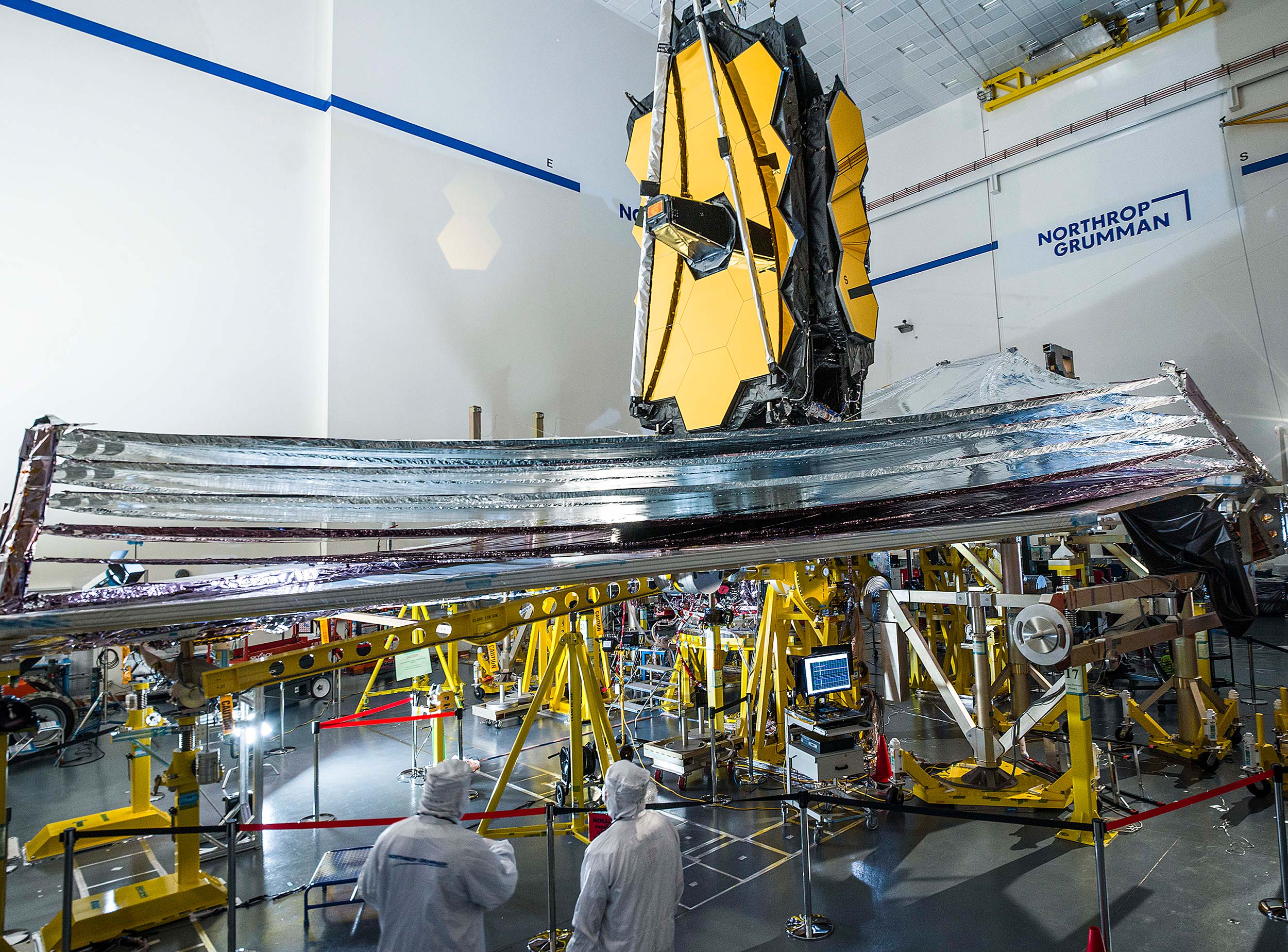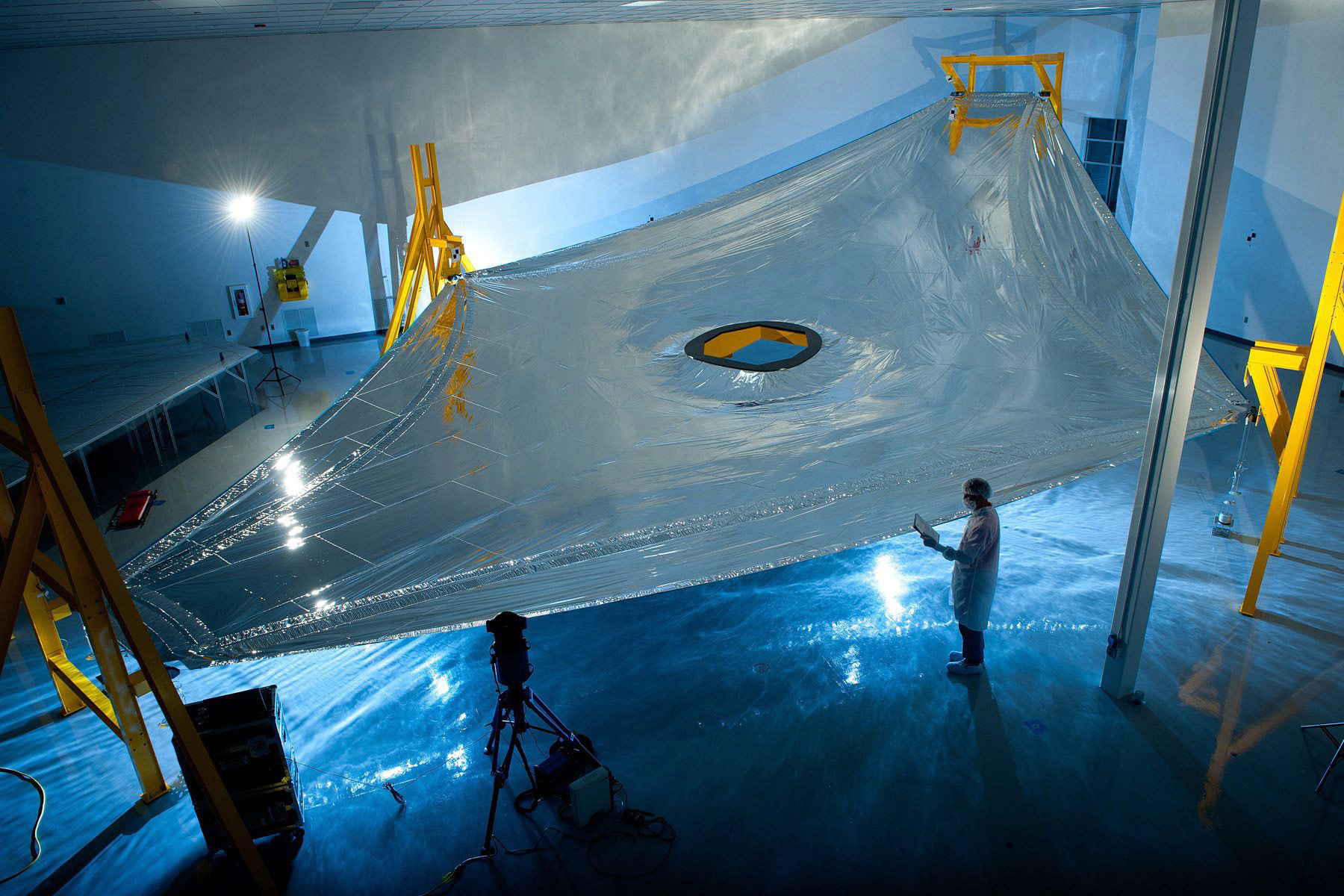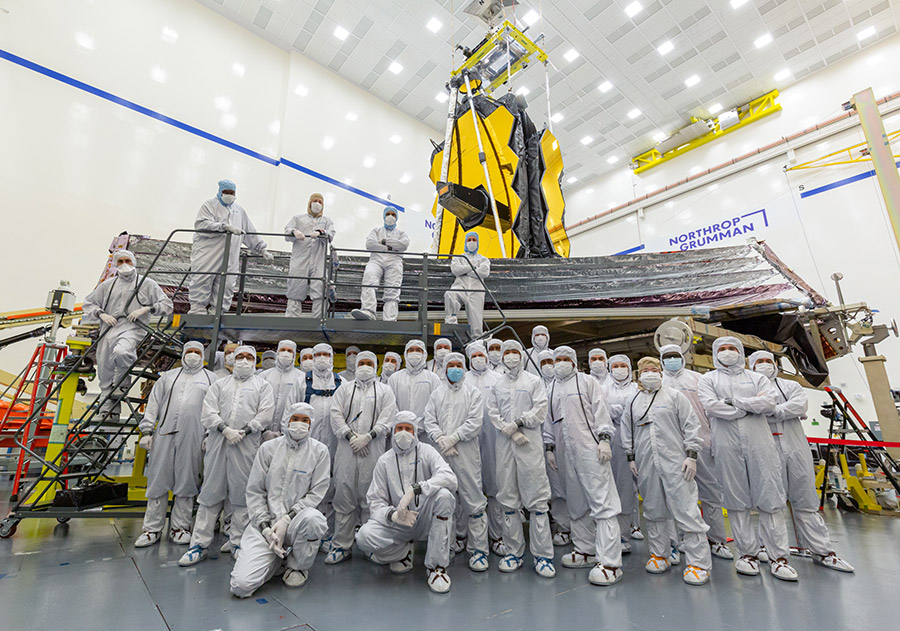One Shot to do the Impossible
The Intense Testing of the James Webb Space Telescope
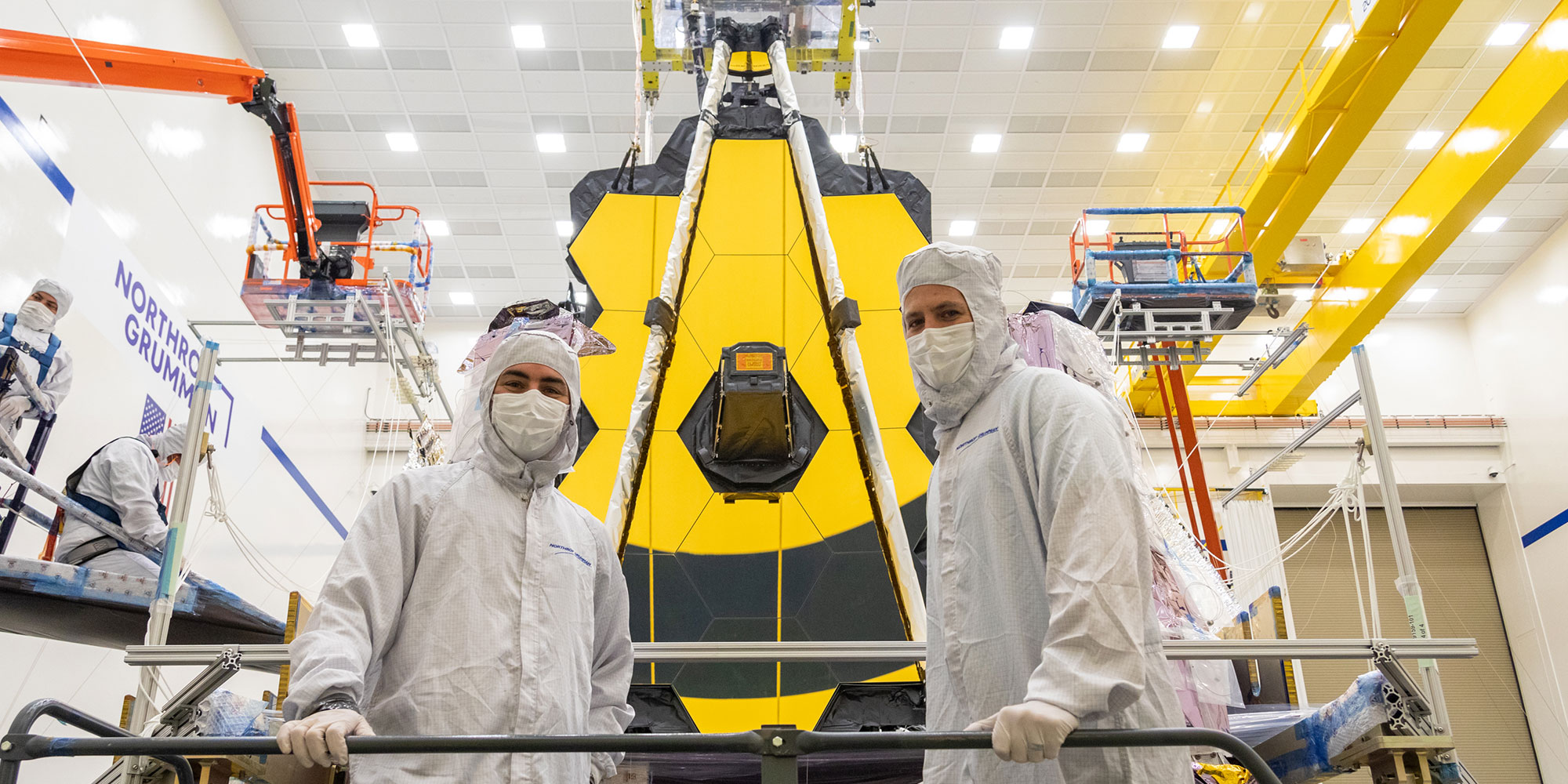
By Adam Stone
The James Webb Space Telescope (Webb) is now orbiting Lagrange Point 2 (L2) approximately a million miles away from Earth, peering back in time that show us how the universe looked in its earliest days. Getting to this point was no easy feat.
Webb is orbiting farther than any manned spacecraft has ever traveled – and engineers had only one chance to get it right.
For Webb’s industry team leader, Northrop Grumman, that meant developing an elaborate series of tests to simulate the conditions Webb would encounter on its cosmic journey.
"Testing the James Webb Space Telescope was paramount in supporting this mission," said Jonathan Arenberg, chief mission architect for space and robotic exploration at Northrop Grumman and former chief engineer on the project. "This is how we convince ourselves that these complicated systems will actually work."
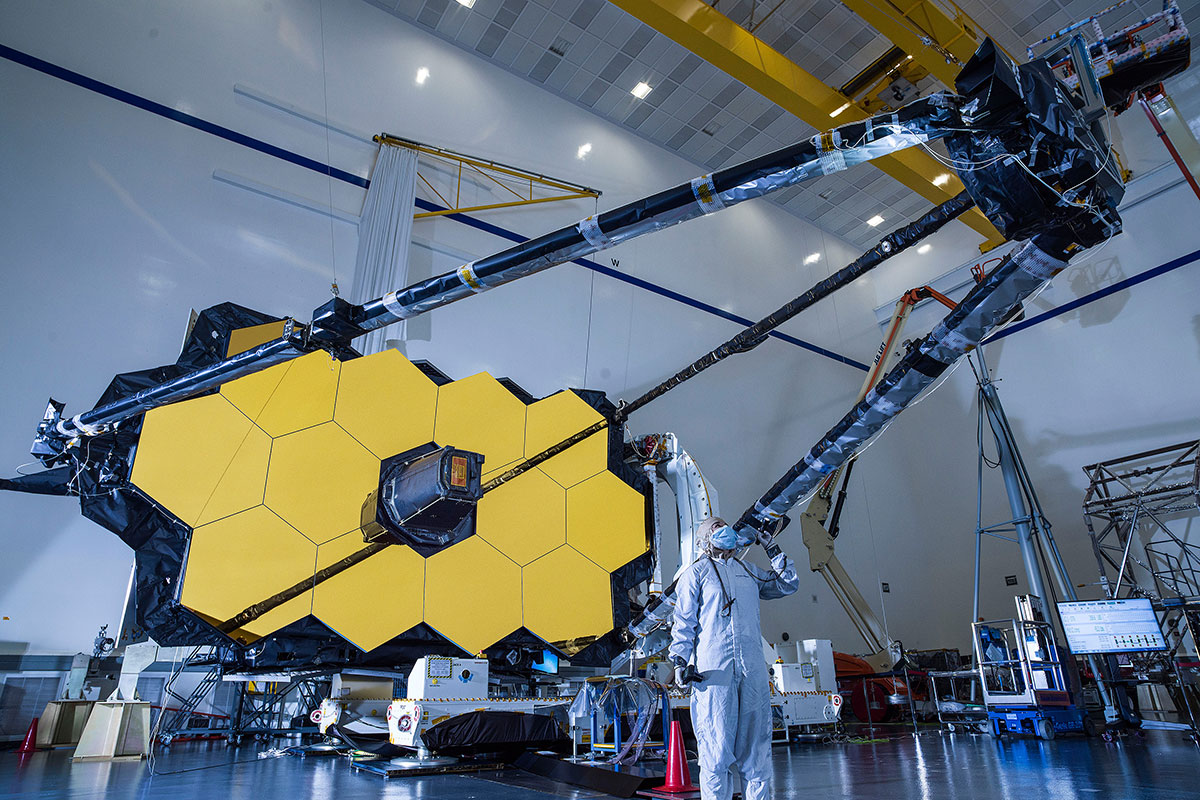
Understanding the Challenge
To appreciate the magnitude of testing, it's important to understand how Webb works.
Webb's primary mirror detects infrared light and reflects it onto a smaller secondary mirror, which then directs the light into the scientific instrument compartment for processing. To make that happen, Webb must unfurl from its compact stowed configuration, a complex series of mechanical articulations that starts with solar array to provide power and includes the tennis court sized sunshield that shades the cold part of the Observatory from the heat and light of the sun.
To say it's a complex operation understates the matter: there were more than 344 possible single points of failure in the system, meaning if anything went wrong it could jeopardize the entire mission.
To ensure the mission went smoothly, Northrop Grumman, alongside NASA, developed a testing regime for a telescope that had to unfold in space — the first time that had ever been done. This was especially challenging since there is no facility in the world large enough to test the entire observatory under the conditions it would encounter in space.
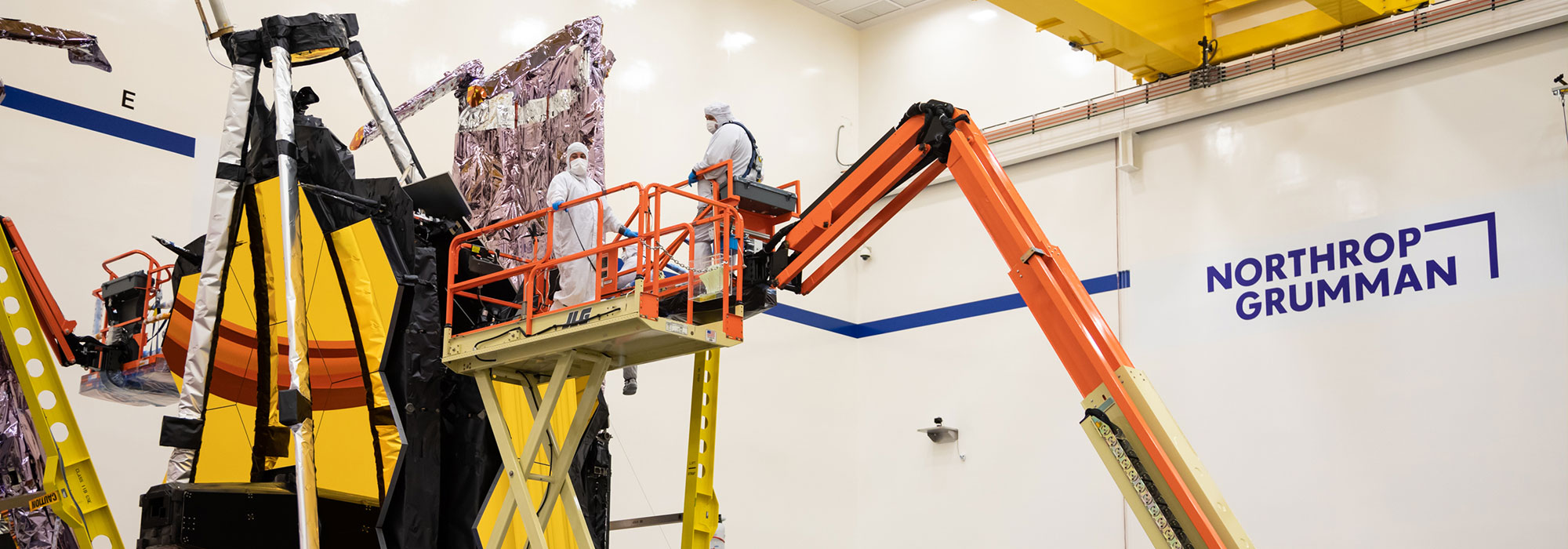
Since it was impossible to replicate those conditions on a scale needed to test the entire system at once, the team took an incremental approach, breaking down the problem into pieces.
"We did smaller, unit-level tests. We did subsystem tests," said James Flynn, who held multiple roles throughout the duration of the project. He served as sunshield manager, chief engineer and eventually vehicle engineering manager for Northrop Grumman. With each iteration, each subcomponent proven, he noted, "We were building up the knowledge base, anchoring the analytical models."
The effort played out over decades, which Arenberg highlighted by pointing out a 20-year-old cover of Aviation Week that depicted an early version of the foldable sunshield. "Everybody's fascinated with the testing at the end, because it was so meticulous, but really the testing has been a foremost consideration since the very beginning of this effort," he said.
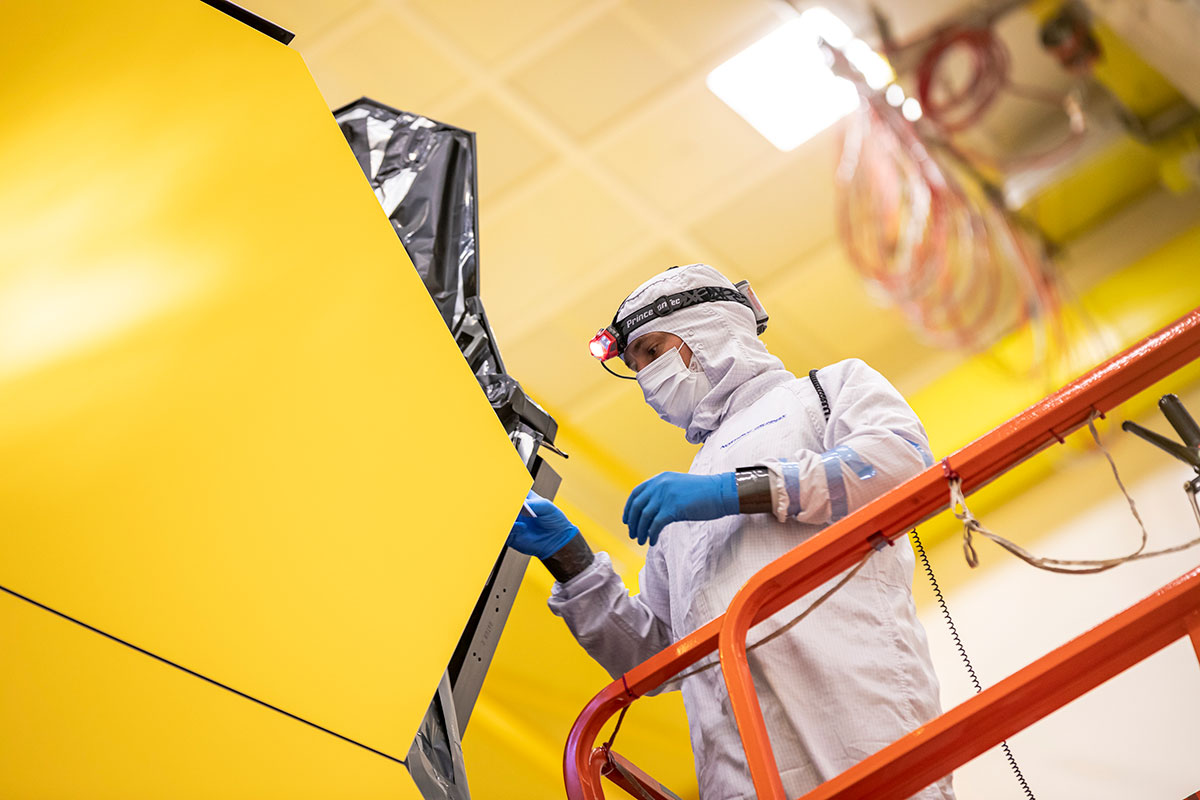
Testing in Action
Testing wasn't just about proving that the design worked. Because nothing like Webb had been built before, at every stage, testing actually helped to drive the design process and generate a better end product.
In the case of the sunshield, for example, Arenberg explained, "We built a one-third scale unit and tested it in a vacuum chamber." Those tests helped to drive future iterations of this key component.
In particular, the testing team took a deep dive into the operations of the sunshield's technologically complex folding membrane.
"We took a section of that membrane, all folded up, and put it in a cold chamber to see how it might act differently than in an ambient test," Flynn said. "We got that difference, and we ran some analytical models to understand the rotation of the hinges and other operations."
With Webb, as with any of the complex systems Northrop Grumman designs, "the point of testing is to understand how it performs," Arenberg said. "In the early phases, it's about understanding the fundamental physics of the system, the role of workmanship. Then as we move toward the latter part of the program, it's all about: Did we implement our design properly? Does it work as expected? Did we remember everything?”
A Team Success
“One of the big takeaways here is that a system like Webb — a flagship, multi-billion dollar, high-stakes scientific observatory — really can be done," Arenberg said. "With any large system, Northrop Grumman's approach to testing can deliver.”
Flynn was there to see those results in real time. He was at the launch site and in the control room during the critical deployment phase.
"It was great!" he said. "When we got that final deployment on the mirror, the whole team was just ecstatic. It was an amazing feeling after all these years, for the big team to be there and for it to be so successful."
Cosmic Game Changer: Northrop Grumman and NASA’s James Webb Space Telescope
Read this fascinating three-part series on the creation of the James Webb Space Telescope.
